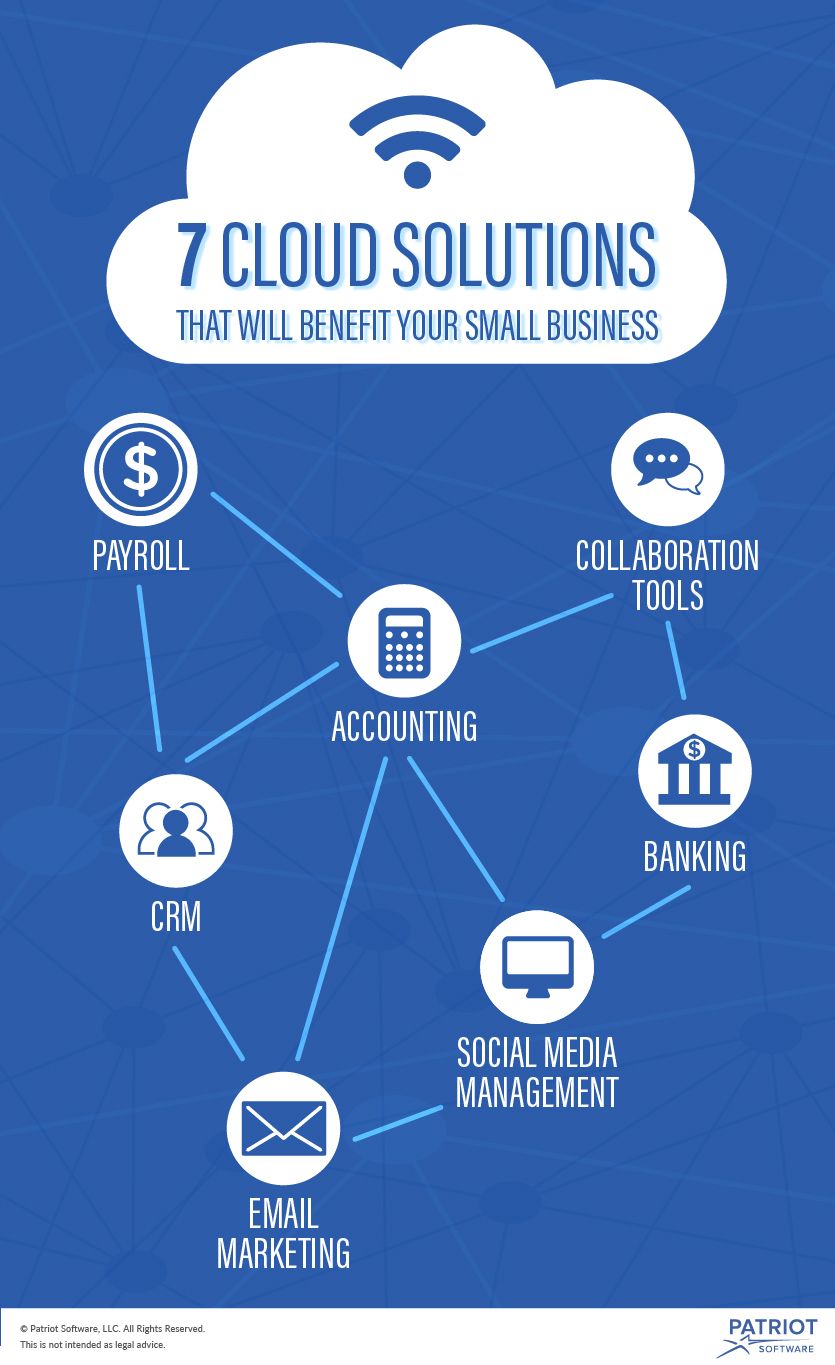If you’re like the average business owner, you always look for ways to get your tasks done fast and cheap. Online cloud solutions for small business can help you do both.
Cloud solutions can free up your time for more important tasks. You don’t have to maintain the software because the provider does that for you. You also don’t have to shuffle and store papers because it’s all online. Also, many cloud solutions that are designed for small business are cost effective. Overall, cloud solutions can make your business more efficient.
Cloud solutions for small business
Here are seven ways you can put your small business in the cloud.

1. Payroll
You can run payroll in the cloud. With online payroll software, you can enter employee hours, run payrolls, and pay employees. The software will even do calculations for you, so you can be sure that you give your employee the correct amount.
Full-service payroll software will also calculate, withhold, remit, and file payroll taxes for you. This means one less thing for you to do.
You can also pay employees from the cloud. You can print paychecks from the cloud software. Or, you can go completely paperless and pay employees with direct deposit.
2. Accounting
You can use online accounting software for small business cloud computing. This allows you to store your business’s accounting records online.
When your accounting records are stored online, they are less likely to become disorganized. You can easily store and search for records. And, because your numbers are online, you can access them from anywhere.
The online accounting software will automatically do calculations for you. Plus, it’ll create reports for you, so you can easily monitor your business’s financial health.
3. Banking
You can use the cloud for business banking. This can help you stay up to date on how much money you have in your bank account. You can see a record of money moving in and out. And, you can move money between accounts.
Depending on what your bank allows you to do online, you might be able to pay toward loans, order more checks, automate bill payments, and cash checks virtually.
4. CRM
A cloud-based CRM for small business can help you boost your customers’ experiences. You can keep track of your customers, their contact information, and what they bought.
Your remote employees can access the software, and so can you if you’re away from your business. You can all collaborate and keep customer information current.
Cloud CRM software is secure, meaning your customer information is protected. The software provider should have its own security standards in place. You can also limit how much access each employee has to the CRM software.
5. Collaboration tools
Cloud collaboration tools can help you link your team together, especially if you have employees who work remotely. Collaboration tools that are online can keep communication open.
Popular tools include email, chat, and video. Email is good when your employees need to send longer pieces of text and documents. The online chat will let your employees have an ongoing discussion, almost like they are talking in person. Video conferencing tools are beneficial when your team wants to see each other.
6. Social media management
Social media marketing is a mostly free way to promote your business. But, creating content and frequently posting it can take a lot of time. Luckily, numerous social media cloud tools for small business exist.
Social media management software allows you to schedule your posts in advance. You can batch your work instead of deciding what to post the day of. You can also get stats about your posts. Instead of guessing or wasting time figuring out what your audience likes, the software can do that work for you. And, cloud social media tools can tell you the best times to post your content, so more people see it.
7. Email marketing
Email marketing can help you reach your customers and entice the recipients to purchase more. You can use online email marketing software to make sending and organizing emails easier.
Cloud email software lets you add and organize your email lists. You can create templates to help you keep your emails branded. And, you can schedule several emails at a time, so you don’t have to log in everytime you want to send an email.
These views are made solely by the author.



